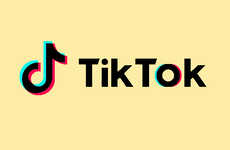
TikTok is Adding Warning Labels to Unverified Content
Riley von Niessen — February 3, 2021 — Tech
References: newsroom.tiktok
To help users navigate the content they see on their For You feeds, TikTok has announced that it will be attaching warning labels to content that is not able to verify the validity of, and removing content that it has confirmed to be untruthful. The goal of the newly added feature is to reduce the spread of misinformation, and remind users that they should conduct their own research before sharing unsubstantiated content.
When the team at TikTok has identified a video with unsubstantiated content, they will include a banner that states that it is unverified. If another user attempts to share the video, they will see another prompt that reminds them that the video has been flagged for this reason. Creators will also be notified when their videos are flagged.
The update is set to rollout globally in the coming weeks, and has already launched within Canada and the United States.
Image Credit: TikTok
When the team at TikTok has identified a video with unsubstantiated content, they will include a banner that states that it is unverified. If another user attempts to share the video, they will see another prompt that reminds them that the video has been flagged for this reason. Creators will also be notified when their videos are flagged.
The update is set to rollout globally in the coming weeks, and has already launched within Canada and the United States.
Image Credit: TikTok
Trend Themes
1. Misinformation Warning Labels - The use of warning labels on content could be applied in other industries to help combat misinformation.
2. Self-regulation by Platforms - Other social media platforms may begin to self-regulate their content to stay ahead of public and political pressure on misinformation.
3. User Education - There is an opportunity to create educational programs and resources to encourage users to conduct their own research before sharing unsubstantiated content.
Industry Implications
1. Social Media - Social media companies can explore the use of AI and machine learning to combat misinformation on their platforms.
2. News and Media - News and media organizations can partner with tech companies to develop tools and resources to fact-check and verify online content.
3. Education - There is an opportunity for schools and universities to incorporate media and digital literacy into their curricula to teach students how to evaluate and verify online content.
0.9
Score
Popularity
Activity
Freshness
























